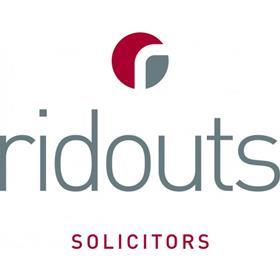Errol Archer gives his insights into the sentencing remarks of the judge in the Health and Safety Executive prosecution of Shrewsbury and Telford Trust
The sentencing remarks of Mr Justice Charles Haddon-Cave in the Health and Safety Executive prosecution of Shrewsbury and Telford Trust provide a rare and clear insight into the courts’ current approach to sentencing in serious health and safety prosecutions. The judge is a senior member of the judiciary whose approach will be followed by his fellow judges. Sir Charles was the sentencing judge when Mid Staffordshire Foundation Trust was prosecuted in 2014 and 2015 following its infamous safety failings. Sir Charles is also recognised as one of the world’s leading experts in the fields of aviation and maritime safety.
R (HSE) v Shrewsbury and Telford Trust
The sentencing at Stafford Crown Court, on 28 November 2017, followed a series of HSE investigations into the deaths of five elderly patients. The trust pleaded guilty to breaching section 3(1) of the Health and Safety at Work Act 1974 in respect of all five deaths caused by fatal injuries following falls between June 2011 and November 2012. Four of the patients fell at the Princess Royal Hospital with the fifth falling at the Royal Shrewsbury Hospital.
Sentencing – general principles
Due to their size, all NHS trusts will be categorised as, at least, “large” organisations when sentenced for health and safety breaches. The judge noted that the appropriate guidance when sentencing such large organisations is contained in R v Sellafield and R v Network Rail Infrastructure Limited (2014) and in the Sentencing Remarks in R v Mid Staffordshire NHS Foundation Trust (2014). The judge drew particular attention to the following remarks of Scott Baker J. in R v F. Howes and Son (Engineers) Limited (1999):
“The objective of prosecutions for health and safety offences in the workplace is to achieve a safe environment for those who work there and for other members of the public who may be affected. A fine needs to be large enough to bring that message home where the defendant is a company not only to those who manage it but also to its shareholders.”
NHS trusts and other public bodies
This makes sense for companies. But one might reasonably question the point of fines imposed on NHS trusts; being public bodies, any fines are paid out of public funds. Mr Justice Haddon-Cave emphasised the accountability of public bodies, stressing that HSWA applies:
“…to all responsible public bodies, just as they do to private organisations. Accordingly, public bodies are to be held equally accountable under the criminal law for acts and omissions in breach of Health and Safety legislation, and punished accordingly.”
That said, sentencing judges have the discretion to reduce the fine where the defendant is a public body. The fine “should normally be substantially reduced if the offending organisation is able to demonstrate the proposed fine would have a significant impact on the provisions of its services”. The judge reduced the fine for Shrewsbury and Telford Trust by 50 per cent to “reflect the trust’s financial circumstances and that it is a public healthcare body”.
Sentencing guidelines
Mr Justice Haddon-Cave’s sentencing remarks include comments on a number of matters to be determined in accordance with the Sentencing Council’s Definitive Guidelines for Health and Safety offences, published in February 2016. These include the concepts of “culpability”, “harm”, “significant cause of harm” and “aggravating and mitigating features”.
Any readers wishing to understand better the approach taken by judges can read the full sentencing remarks here
Shrewsbury and Telford Trust was fined £333,333 plus prosecution costs of £130,000. They also, separately paid £70,000 in respect of the HSE’s fee for intervention.






























No comments yet